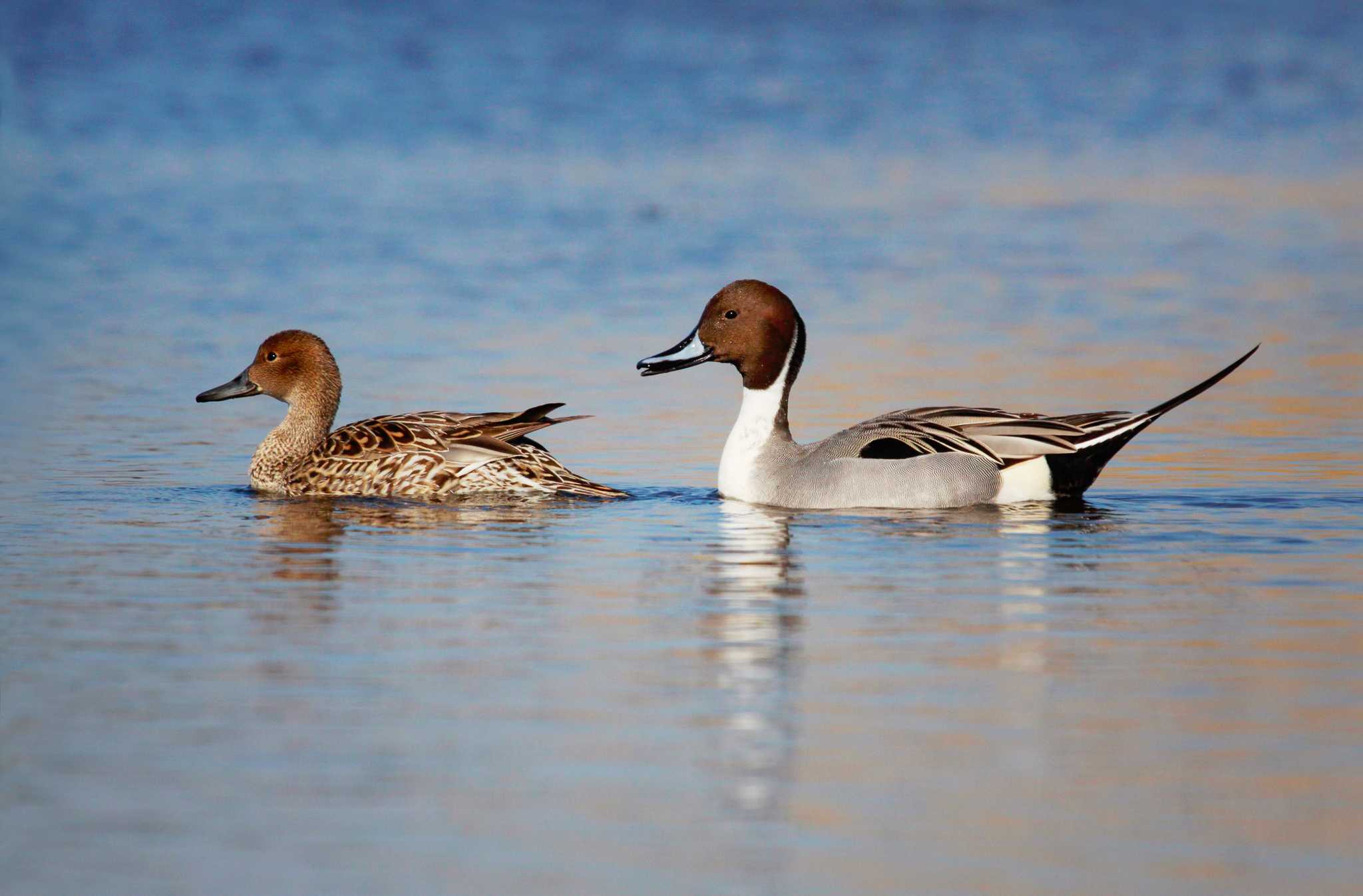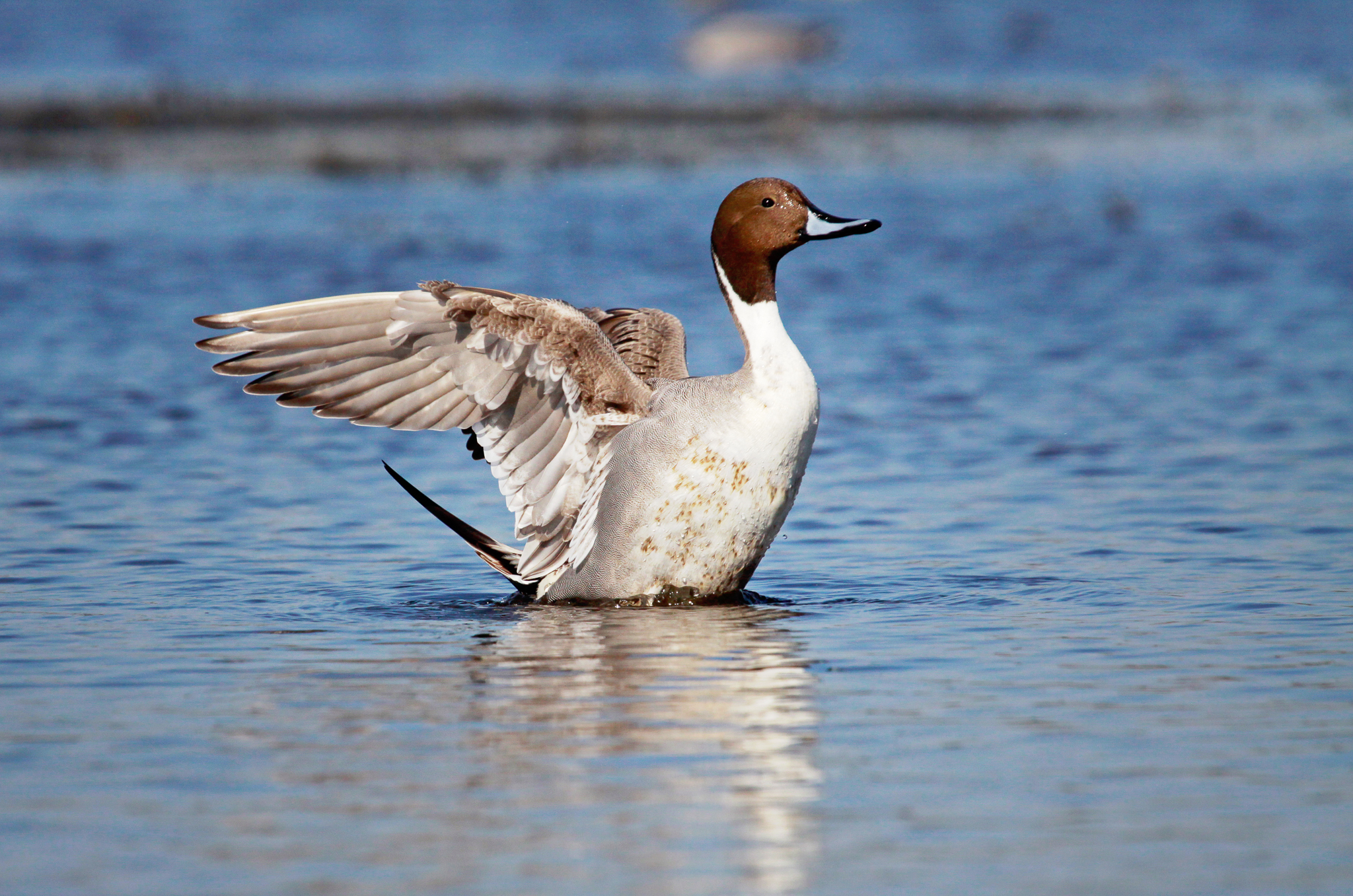Northern pintail
- Northern pintail
- https://linnuriik.ee/wp-content/uploads/2021/09/Soopart_Mati-Martinson-2-1024x679.jpg
- Keemu linnud
- https://linnuriik.ee/wp-content/uploads/2021/09/soopart_salvestusVRunnel.mp3
Northern pintail (male). Photo: Mati Martinson
Introduction
Latin Anas acuta
Estonian Soopart
Also known as: pintail
Status in Estonia
Breeding, migratory and occasional wintering bird.
Description
The Northern pintail is about the size of a mallard but more slender. The wings are long, narrow, and pointed, as is the tail; the male bird, in particular, has a long, thin neck and a small head. The large middle tail feathers of the male bird make it easy to identify in its definitive plumage. His head and upper neck are brown, while his chest and crop area are white. A white stripe runs from his chest to the back of his head. The secondaries are blackish green, with a white back edge and a pale orange front edge. The female bird has brown stripes and markings, a dark grey beak, a brownish head, dark brown secondaries and a brownish-white stomach. The male bird in eclipse plumage has similar plumage to the female bird, but the wing tip is the same as it was in spring and the shoulder feathers are longer and greyer.
Size
Body length 51–62 cm, wingspan 79–87 cm, body mass 900–1100 g.

Northern pintails (female and male) Photo: Mati Martinson
Similar species
Long-tailed duck, mallard, gadwall, garganey.
Distribution
The nominate species Anas acuta acuta is found throughout the Neoarctic and Palearctic zones. The Northern pintail is an uncommon breeding bird in Estonia. The breeding individuals spend their winters primarily in Western Europe (France, England, etc.), but also in North and West Africa.
Population
Estonia has 10–20 breeding pairs.
Occurrence in Estonia
It normally arrives in Estonia during the second half of March. Local breeders leave in September, with the last sightings being in the second half of October.
Diet
The Northern pintail is an omnivore. Its diet consists of both aquatic invertebrates and plants. It also eats insects and snails near water bodies. During the first few days, the chicks eat larvae, snails and crustaceans.
Habitat
The preferred biotopes of the species are beach meadows and flood-meadows along large rivers.
Nesting
Pair formation begins in the autumn and early winter and usually ends before reaching the breeding grounds. During the courtship ritual, the male bird swims near the female bird, head down, tail up and whistles. The female bird digs a nest on damp, thinly vegetated soil lined with soft grass about 2–5 days before laying the first egg. The female bird is in charge of incubating and raising the young, while the males leave after mating and gather in small flocks. The female lays 7–9 olive-green oval eggs, which she incubates for 22–24 days. The chicks hatch within 24 hours. Chicks can feed soon after hatching and can fly when they are 40–45 days old.
Conservation status and protection
The breeding population belongs to the protected species of category II. The main threat is the destruction of suitable nesting sites.
Distribution and population in Lääne County.
The Northern pintail is a common migratory bird in Matsalu Bay and the Silma Nature Reserve. The bays here are shallow, which provides excellent feeding possibilities for these dabbling ducks.
The Haeska birdwatching tower near Matsalu offers the best view of Northern pintails. Up to 5000 birds can be seen here during their spring migration in April. Another important migratory stopover area for Northern pintails is located in Noarootsi on Tahu Bay. Northern pintails stop on Lääne County’s inner bays in greater numbers in the spring, then again in the autumn in August and September.
